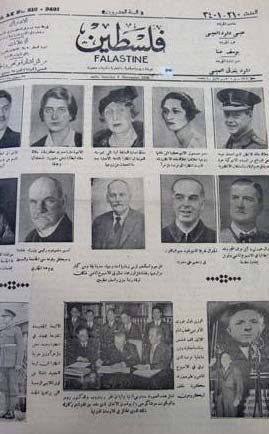
Over 30,000 pages of Givat Haviva Pre-State Arabic Language FALASTIN newspaper collection now on Internet
Photo & text by Lydia Aisenberg
Stacked on top of broad wooden cupboards in the main library of the Givat Haviva Institute in Wadi Ara are a dozen battered brown cardboard boxes containing scores of crumbling pages of Arabic language newspapers from the 1930s, 1940s and more. Many more equally well-worn storage boxes containing the main bulk of the collection are kept in the Givat Haviva Sarah and Yaacov Eshel Peace Library complex.
The disintegrating pages of history contain fascinating news reports, articles, opinion pieces and political cartoons, all of which are pure gems of information for the serious researcher and the amateur sleuths of the regions past.
Whether one knows the Arabic language or not, it is easy to get hooked on the yellowing tattered pages of yesteryear - the black and white photographs of Arab, British, Jewish and other personalities who were directly or indirectly connected to events in the Pre-State Israel region and major events taking place in other parts of the world in those times.
There is even a picture of the former American competitive swimmer and Hollywood movie star, Esther Williams, on the front page of a 1940s Arabic language newspaper, dressed only in her swimsuit and about to dive across a number of print columns while, at the same time, stern-faced politicians and uniformed British Army officers stand stiffly to attention on another part of the page.
Photographs taken from vintage – well these days they are – planes flying over British Mandate Palestine landscapes, and others of scenes from the daily life of those living in the troubled region, have been brought out of the musty cardboard boxes, brought to life with digitization and made available on the internet with the help of UNESCO and other organizations which recognized the importance of the Givat Haviva collection. An astonishing 33,685 pages are already there at the touch of a button, with plenty more awaiting the painstaking, laborious and expensive process developed by specialists in the field of digitization, therefore preserving an important record of the past for both the present and future generations of researchers and seekers of genuine material from the past.
Many a visitor to the Peace Library at Givat Haviva has viewed the crumbling artifacts from the publishing world of over 90 years ago. The first sight of the newspapers leaves an indelible mark on the memory boxes of those folk, and for some is a definite key to another section of their curiosity boxes and motivation to know more.
“Until the recent digitization, the Early Palestinian Newspaper Collection was one of Israel’s better kept secrets,” says Canadian-born Dr. David Mendelsohn, a social linguist and Academic Director of the Givat Haviva Intensive Arabic Semester for overseas students. Dr. Mendelsohn is fluent in Arabic, Hebrew and several other languages, and is one of the founding staff members of the Intensive Arabic Semester at Givat Haviva due to start its fifth term in January, 2012.
“Having access to a local Arab journal recording the crucial years of 1936-1947 is a gift to any serious researcher into this region of the Middle East. I would feel much more comfortable if these archives would be required reading for any leader or negotiator with the desire to influence or bring about positive change in terms of the Palestine/Israeli conflict. Reading these records allows for better understanding of the local Arab perspective of the time and safeguards against the natural temptation of both sides to give in to historical revisionism,” he added.
The Early Palestinian Newspaper Collection can be viewed at: www.pastnet.org
The Givat Haviva Intensive Arabic Semester can be viewed at: www.intensivearabicsemester.org
 ESRA College Netanya is reborn
ESRA College Netanya is reborn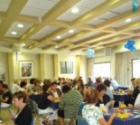 ESRA HERZLIYA ACTIVITIES
ESRA HERZLIYA ACTIVITIES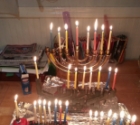 Chanukah Celebration at ESRA Rishon LeZion
Chanukah Celebration at ESRA Rishon LeZion 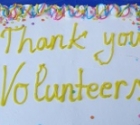 A new website in English - on Volunteering - Launched in Israel
A new website in English - on Volunteering - Launched in Israel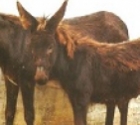 Help Needed for Abused Horses and Donkeys
Help Needed for Abused Horses and Donkeys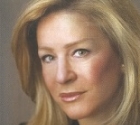 Heather's Heseg
Heather's Heseg Lydia Aisenberg
Lydia Aisenberg